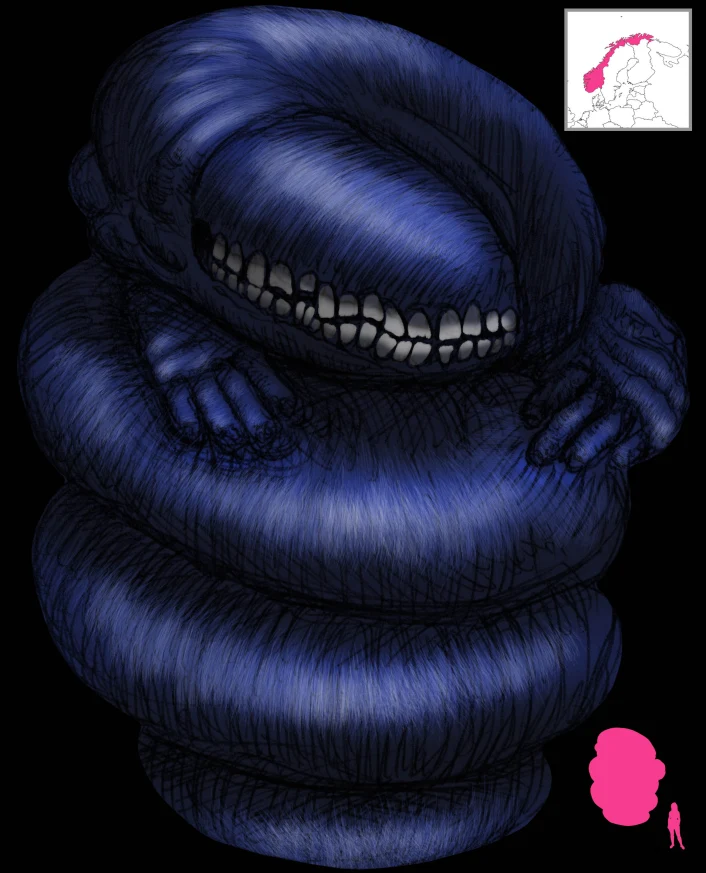Variations: Boyg, Bøjgen, Bojgen, Bøygen, Boygen, The Great Bøjg of Etnedal

The Great Bøjg of Etnedal is a troll encountered by Peer Gynt in his Gutsbrandal adventures. It was memorable enough that Ibsen included it in his version of Peer Gynt, making it an even more otherworldly creature.
The Bøjg is vast, slimy, slippery, persistent, and shapeless. In the original fairytale, it has a head, which lessens its shapelessness somewhat. Ibsen describes it as a misty, slimy being, neither dead nor alive. Running into it is like running into a nest of sleepy growling bears. Its name comes from bøje, to bend, implying something twisting but also something that forces you to turn elsewhere, conquering without attacking. It coils around houses in the dark, or encircles its victims and bewilders them. Attacking the Bøjg directly is futile.
Wherever Gynt turns, he finds himself running into the clammy unpleasant mass. The Bøjg blocks his path to a mountain hut and nothing Gynt does can defeat it. In the fairytale Gynt fires three shots into the Bøjg’s head but to no avail; he eventually defeats the Bøjg through trickery. In Ibsen’s play the Bøjg is overcome by women, psalms, and church bells.
Within Ibsen’s symbolism it is seen as an insurmountable obstacle, a being of compromise and lethargy.
References
Hopp, Z.; Ramholt, T. trans. (1961) Norwegian Folklore Simplified. Iohn Griegs Boktrykkeri, Bergen.
Ibsen, H., Watts, P. trans. (1970) Peer Gynt. Penguin Books, Harmondsworth.
He seems so at peace in the picture
And it also looks like something that Milo would encounter in his travels in Ignorance.
LikeLiked by 2 people
That would be a perfect place to find him! :0
LikeLiked by 1 person
I’m glad someone knows there Phantom Tollbooth
LikeLiked by 1 person
I reread it every year!
LikeLiked by 1 person
I’m torn between wanting one as a pet or avoiding that glowing smile in the dark at all costs. *shudder*
LikeLiked by 1 person
It appears to be the disembodied intestine of the Cheshire Cat.
LikeLiked by 2 people